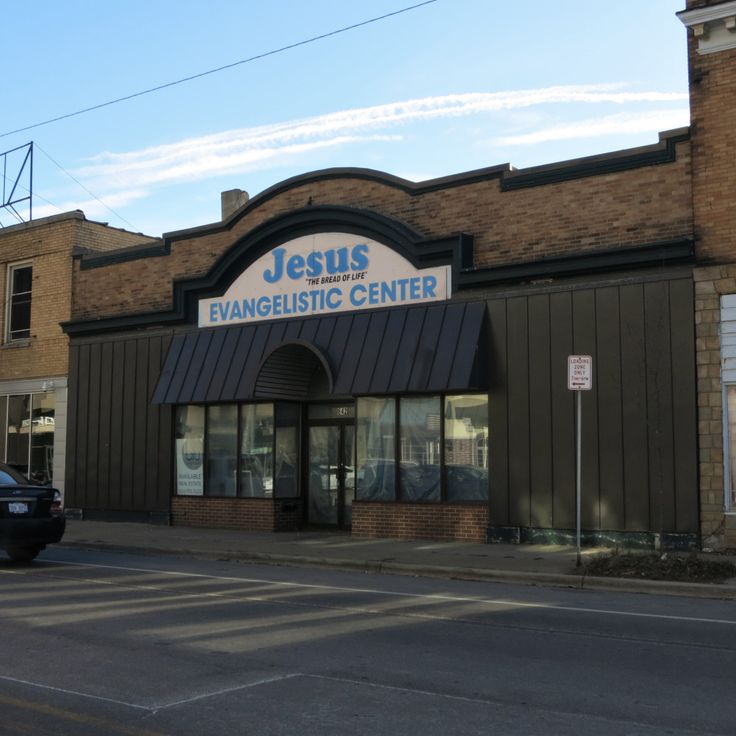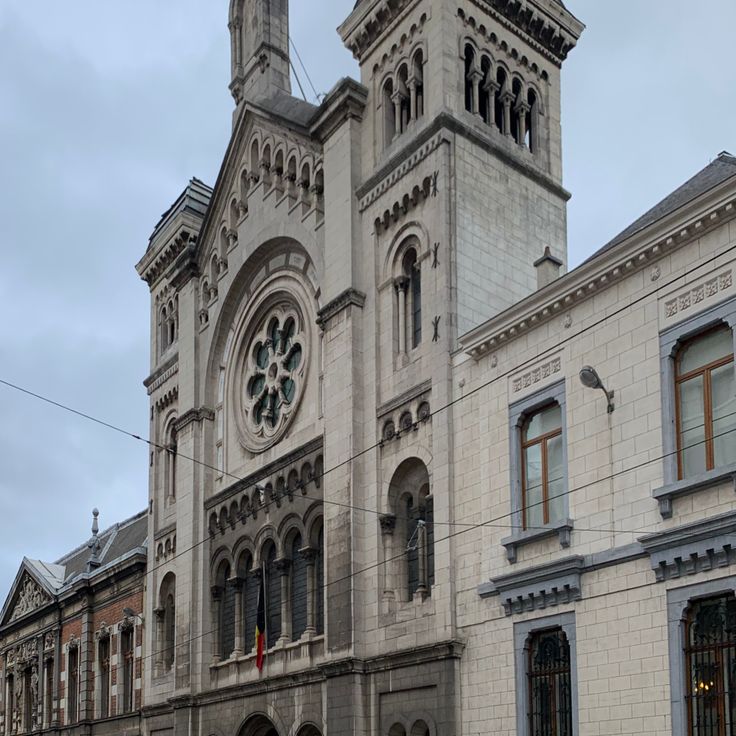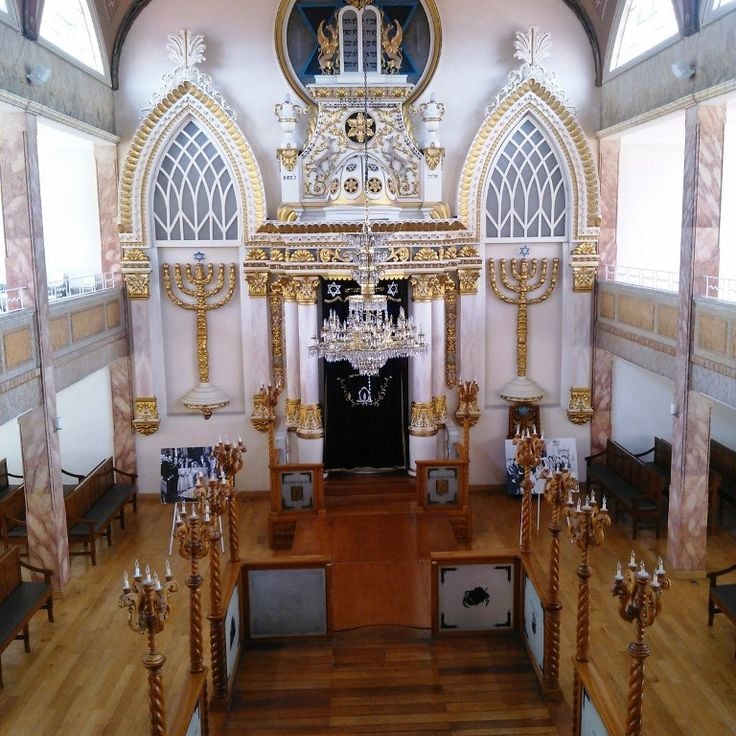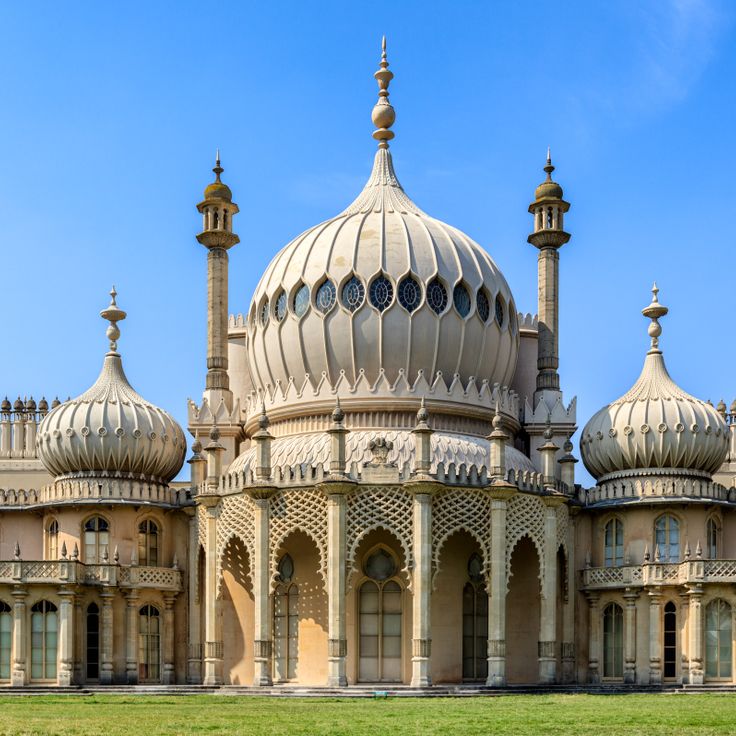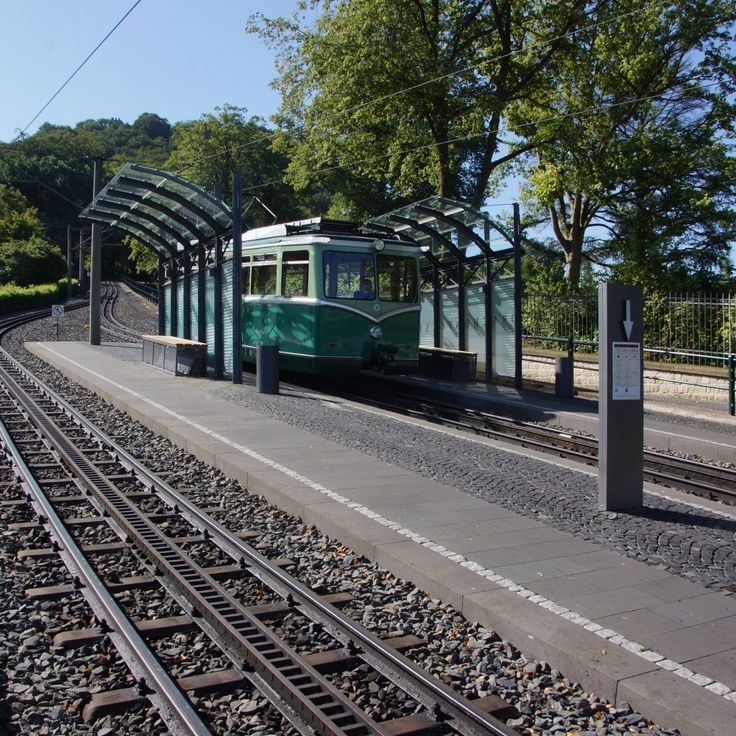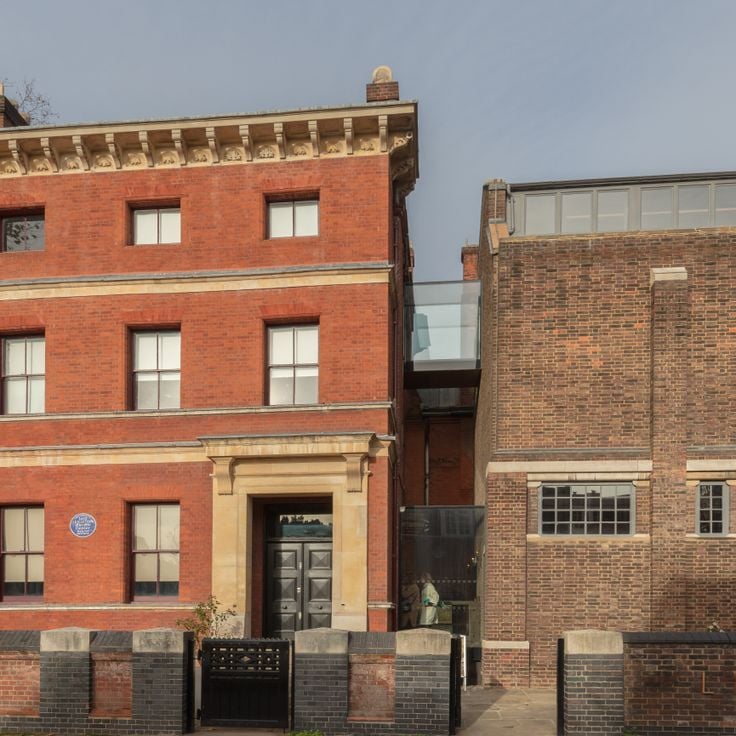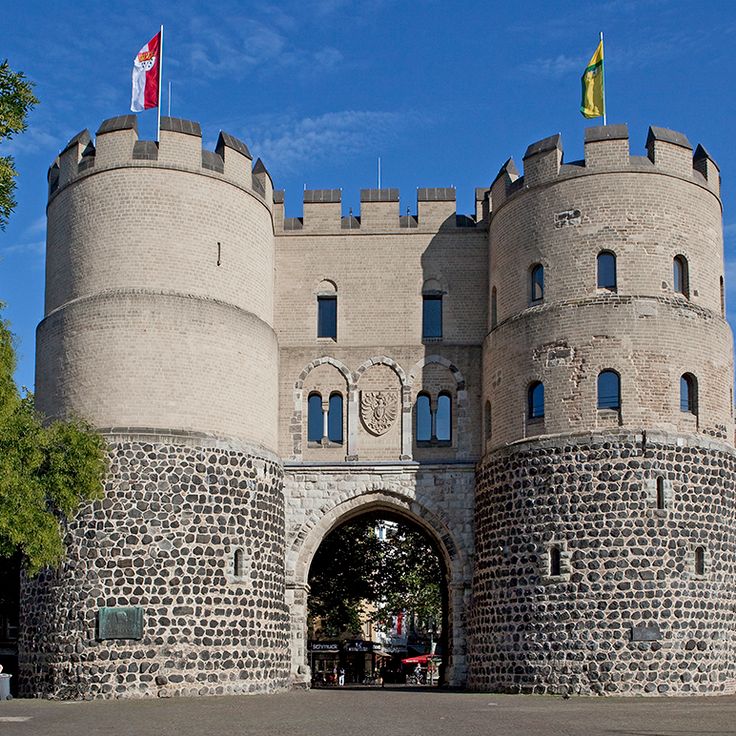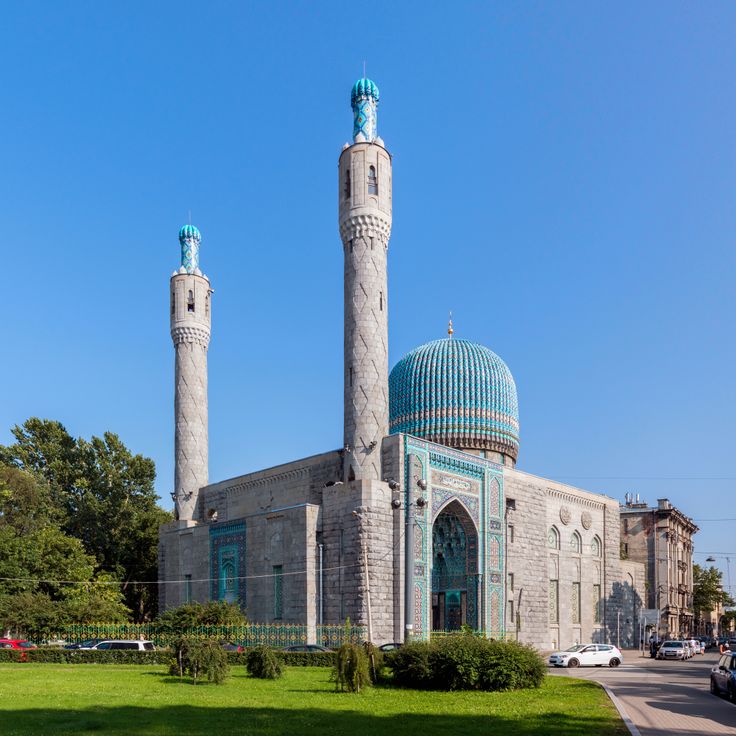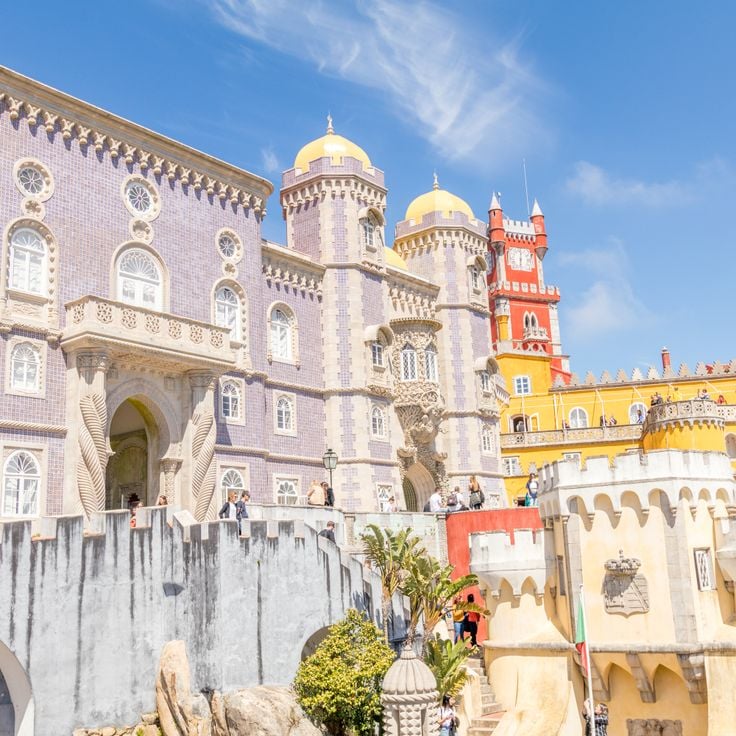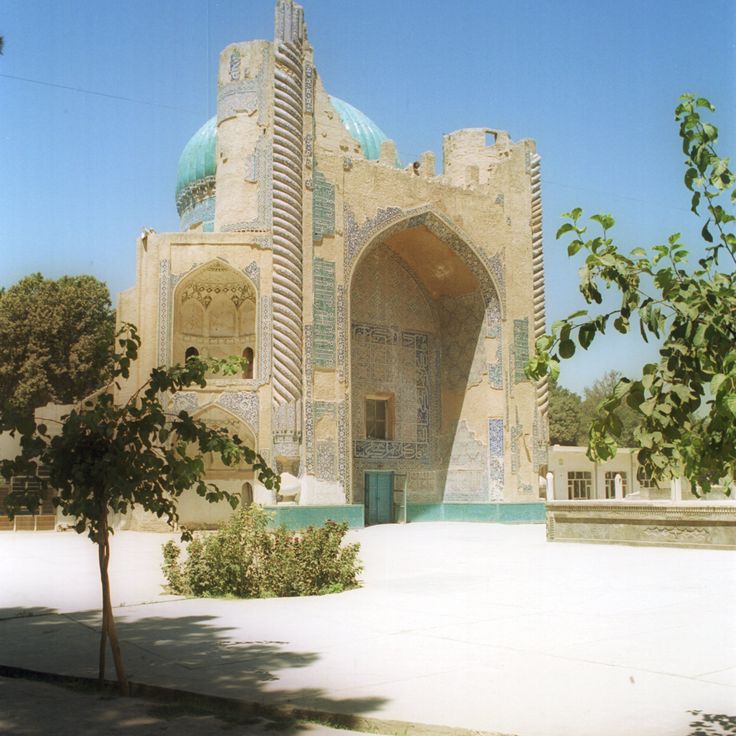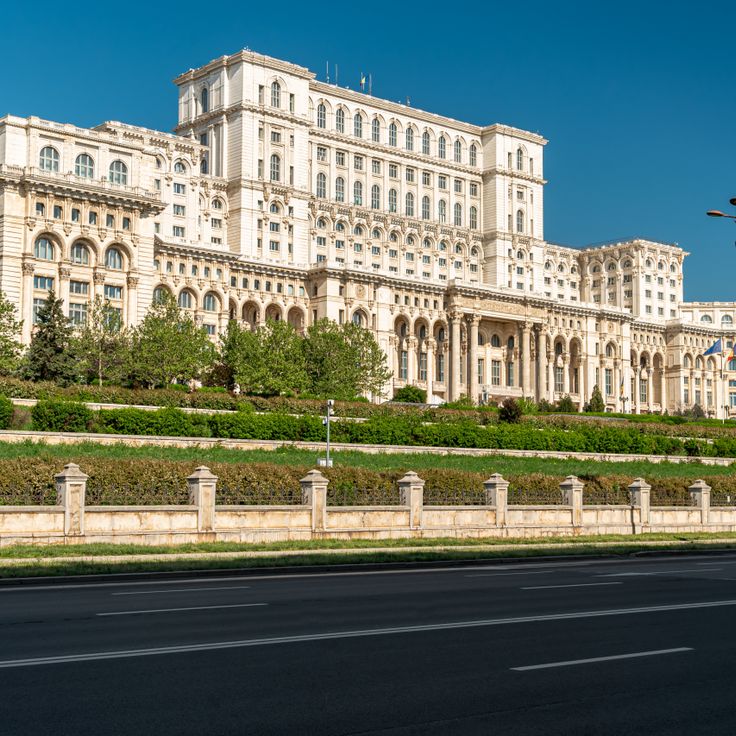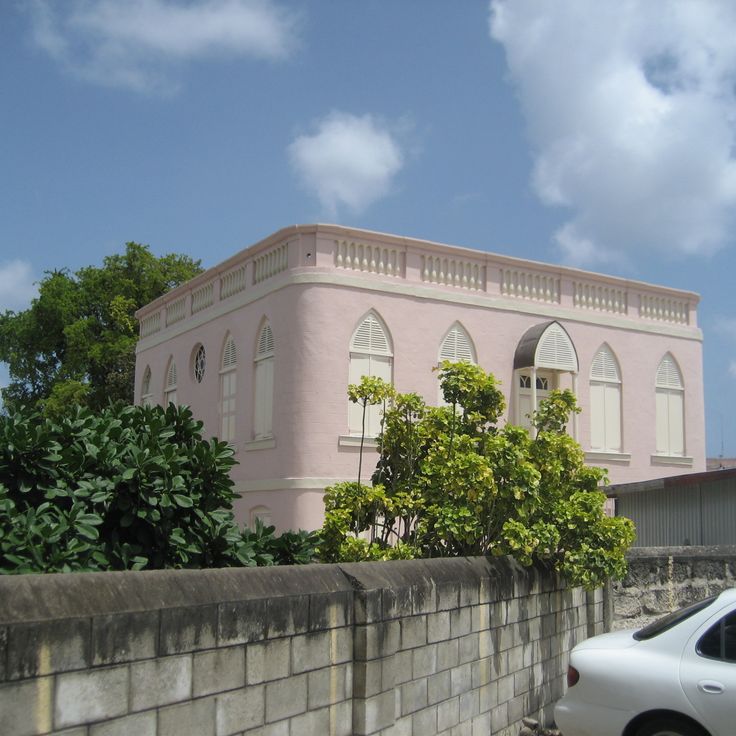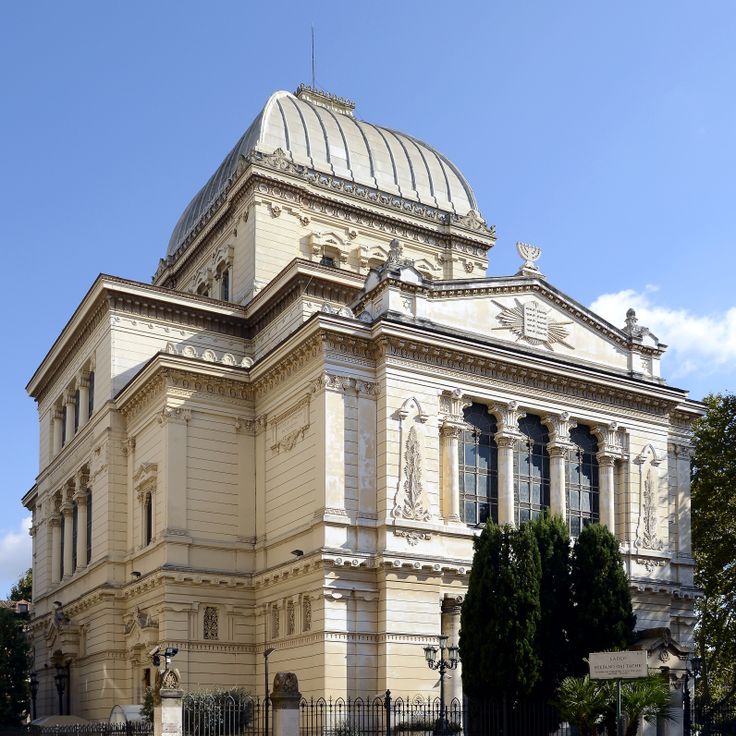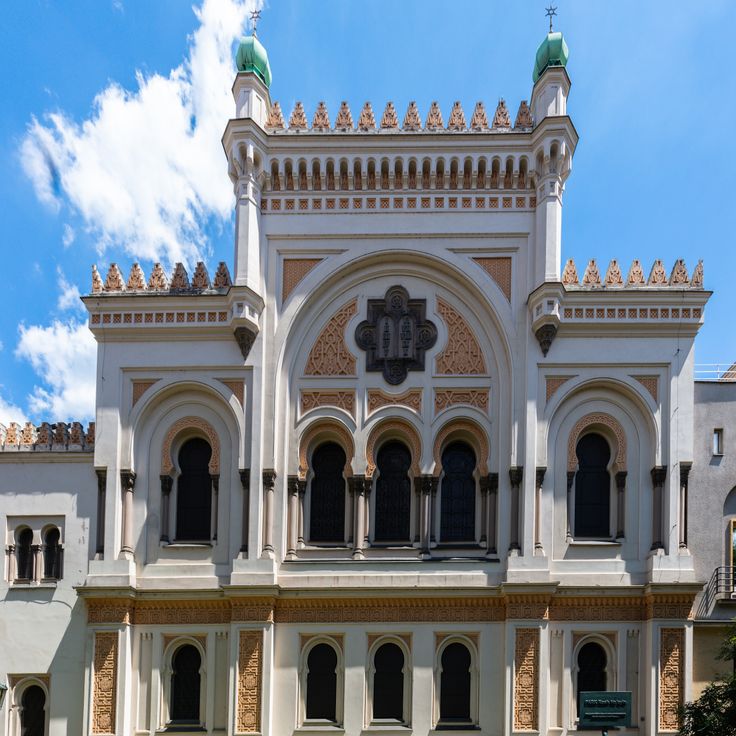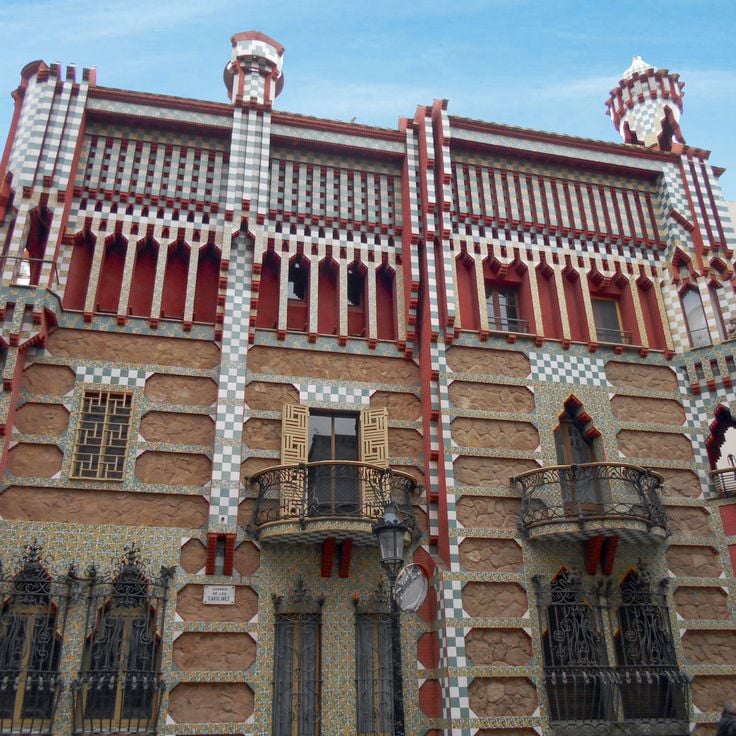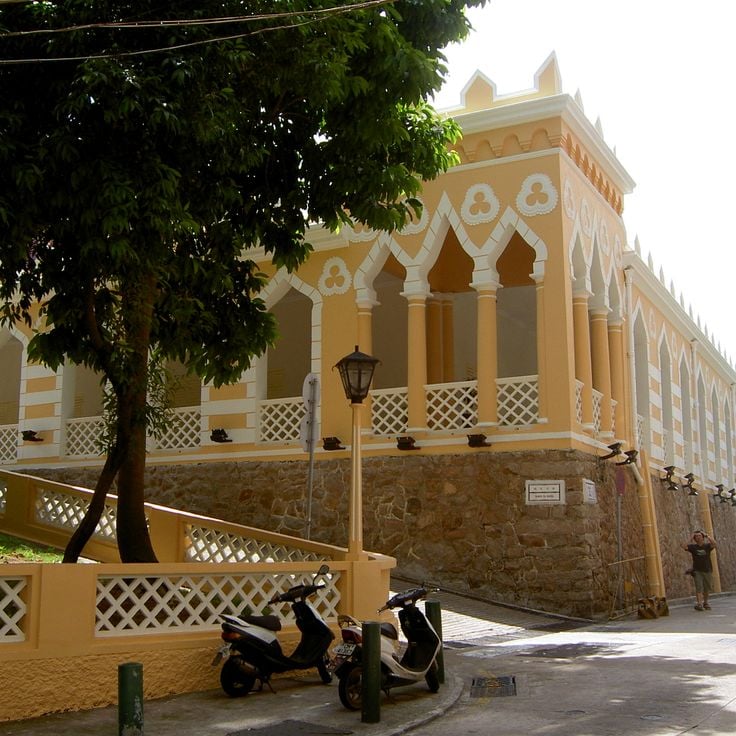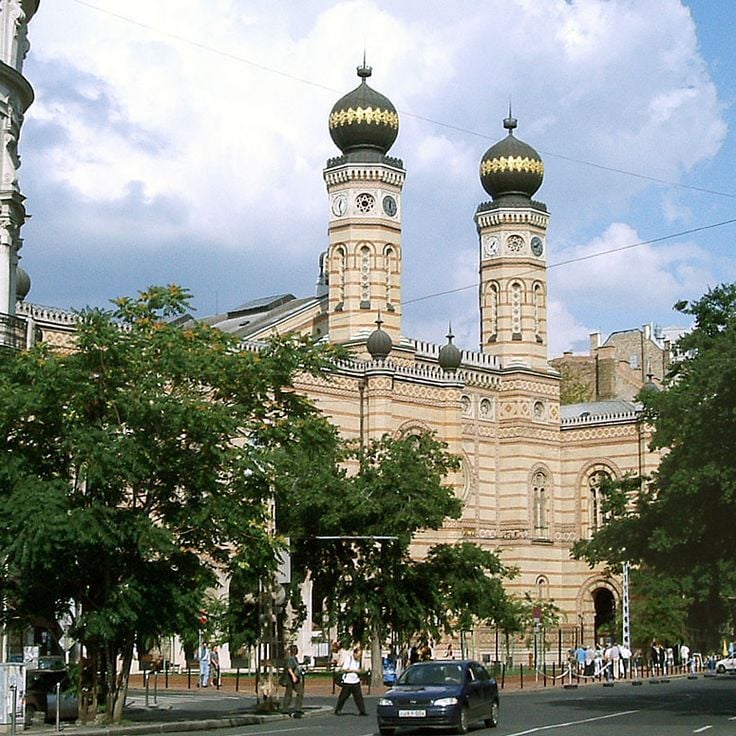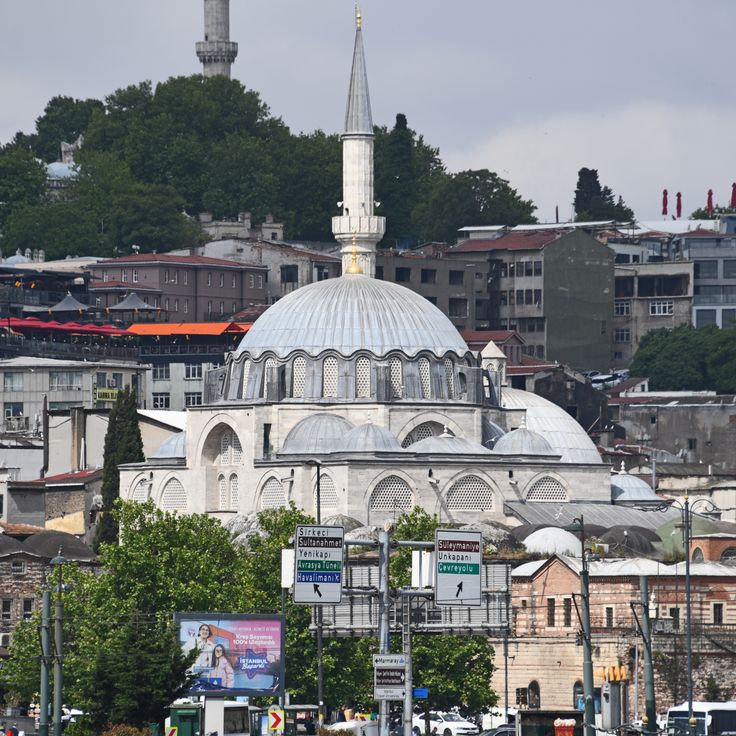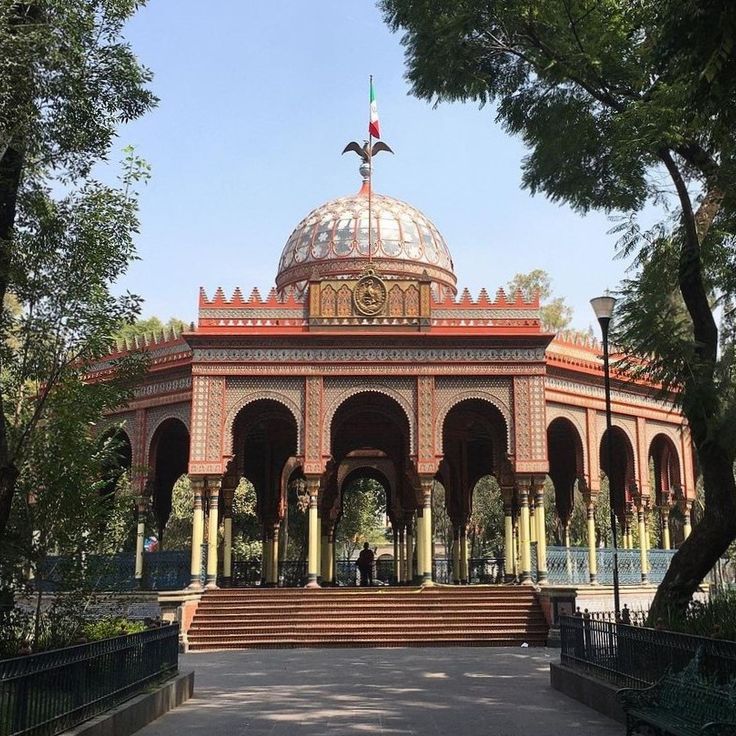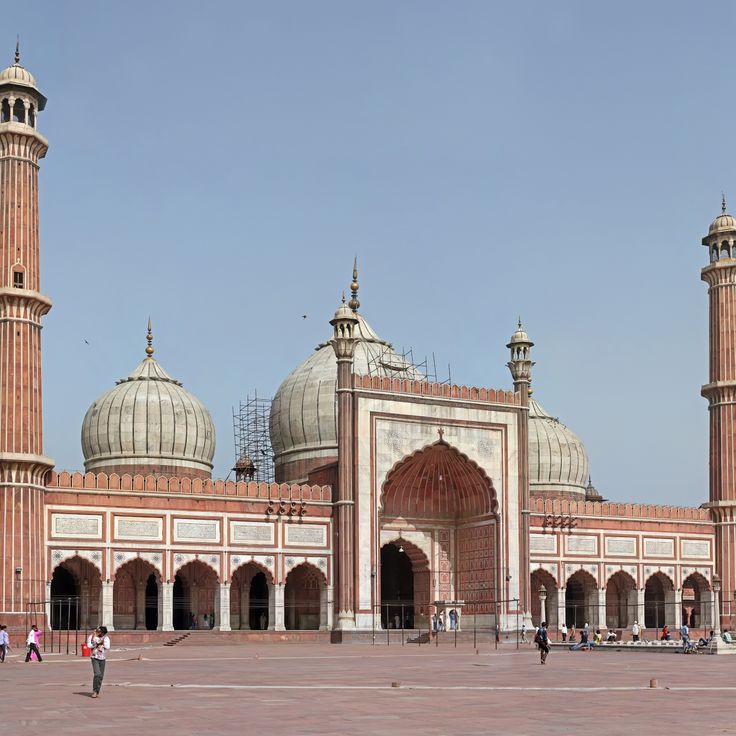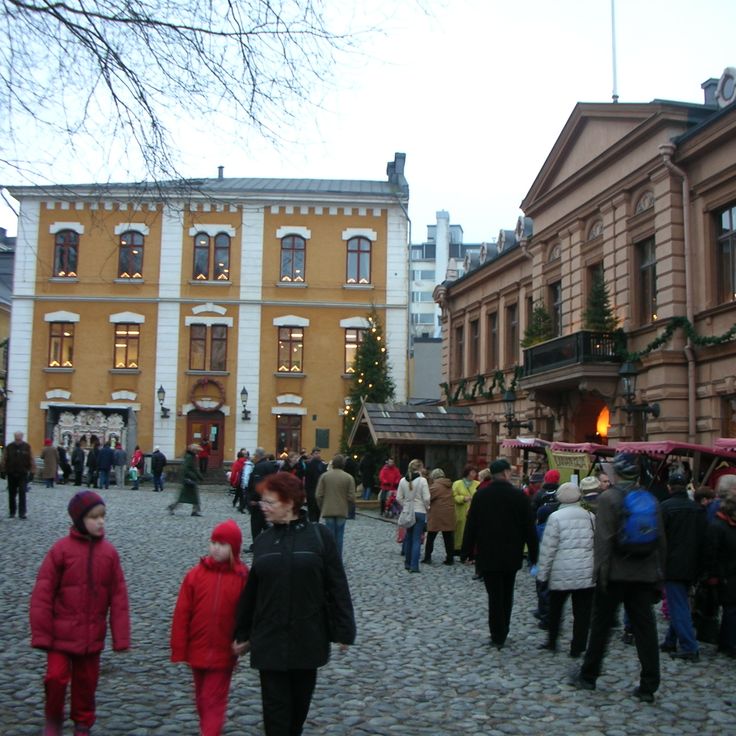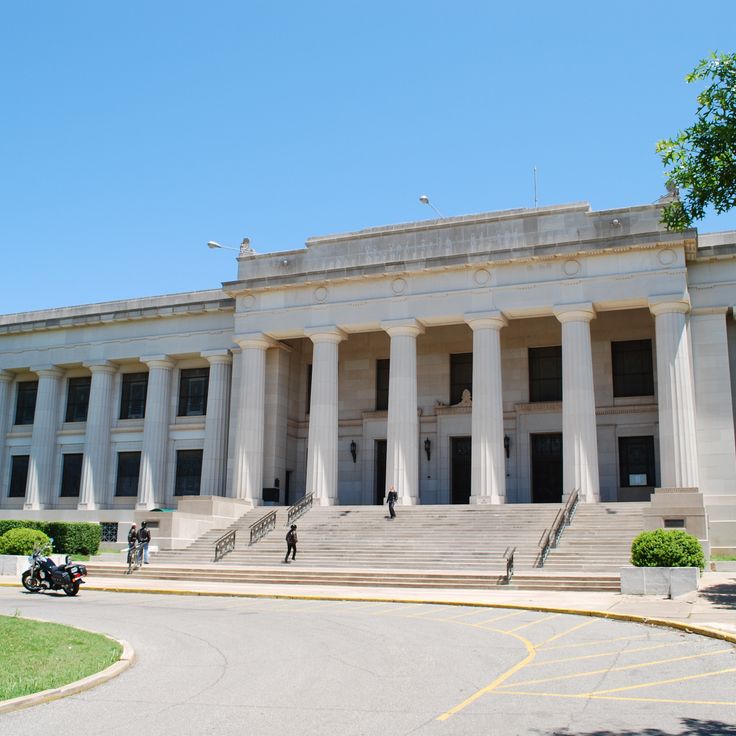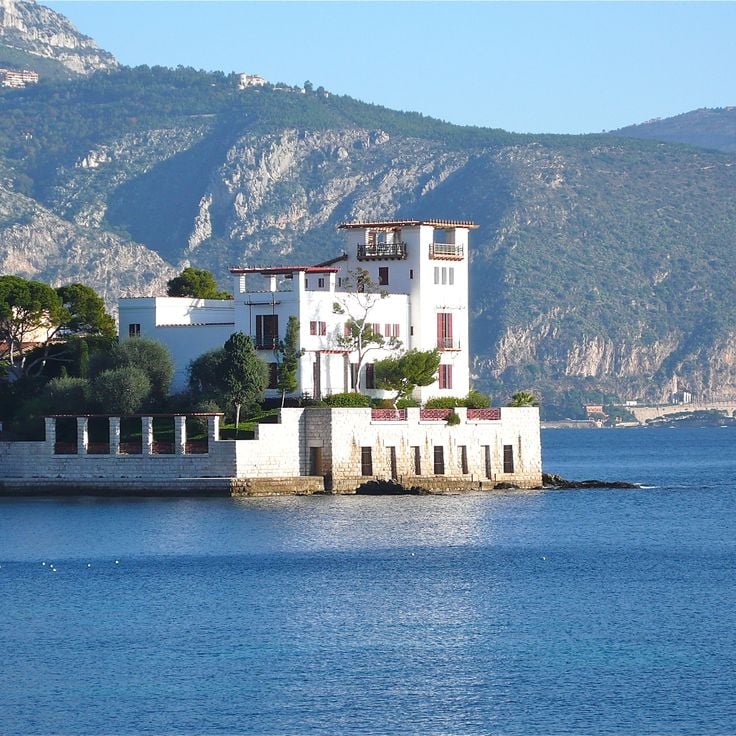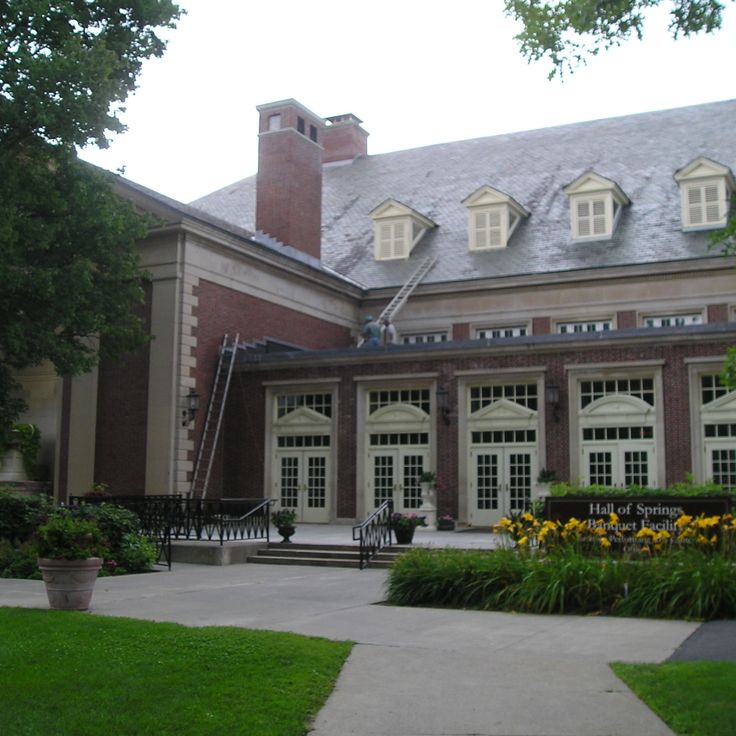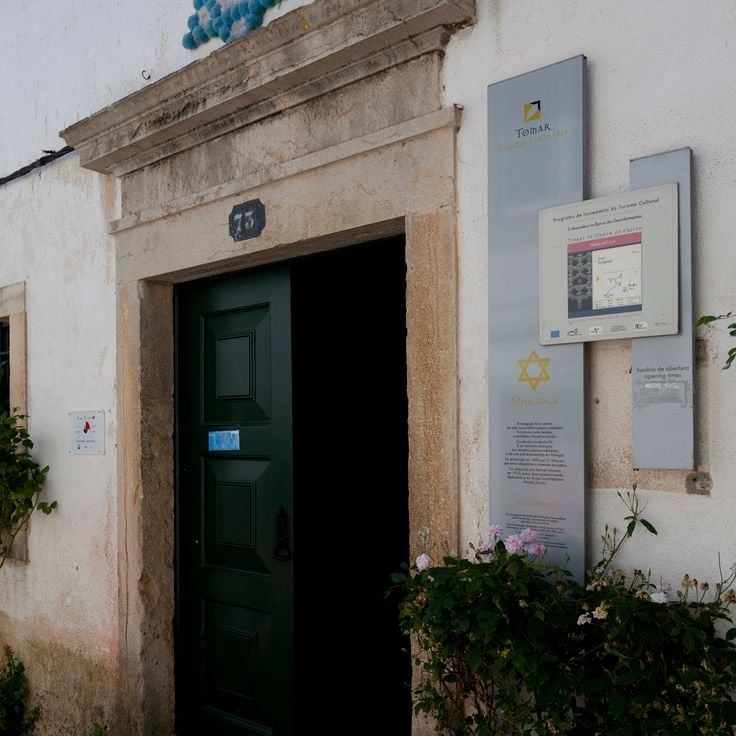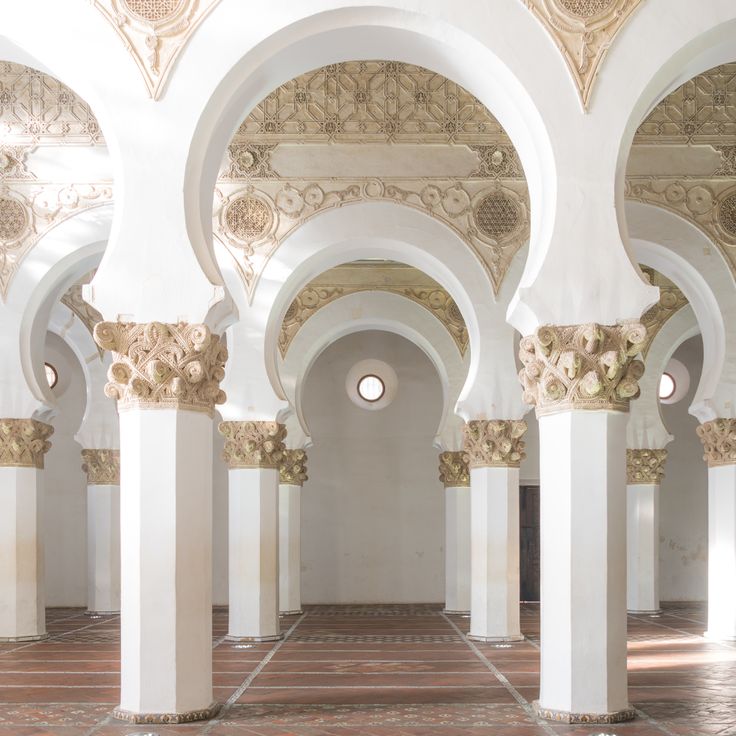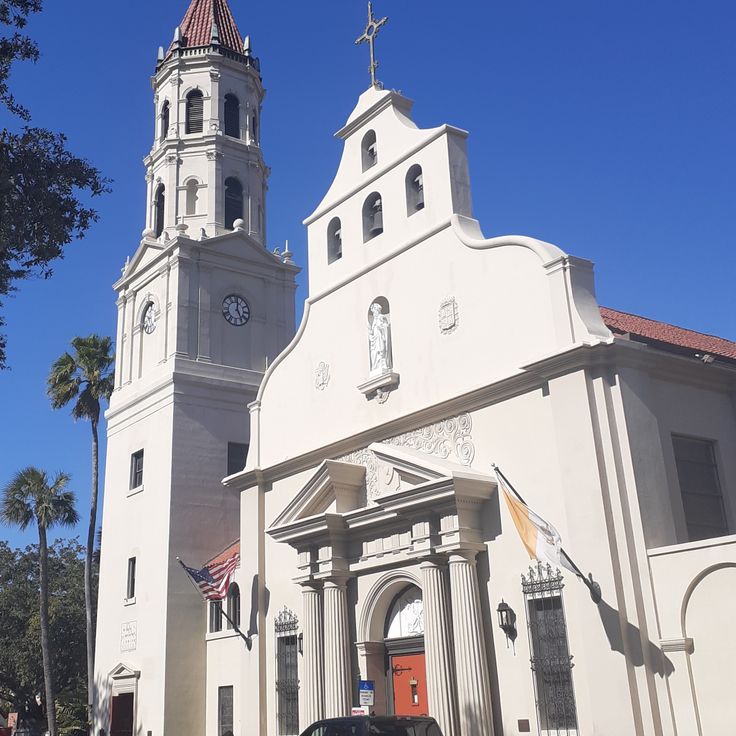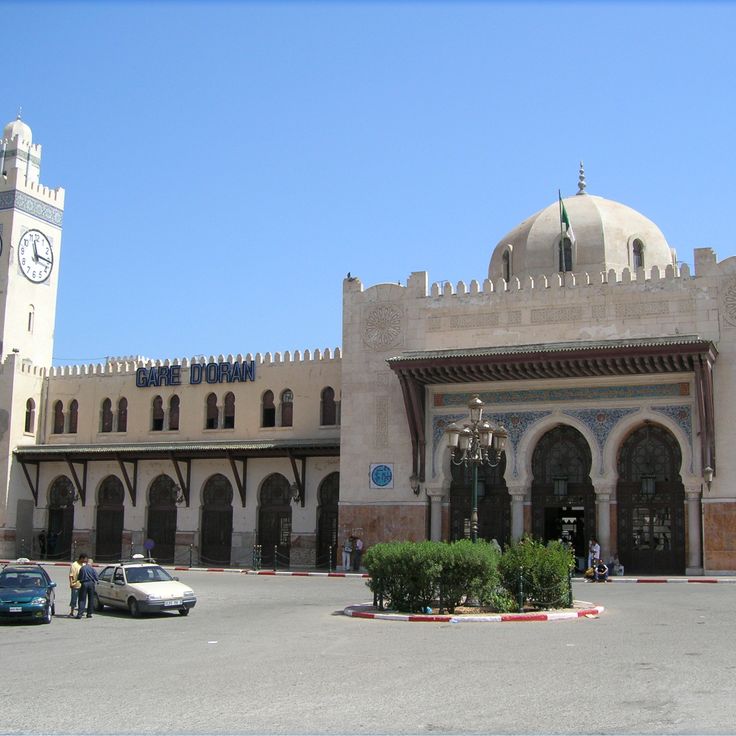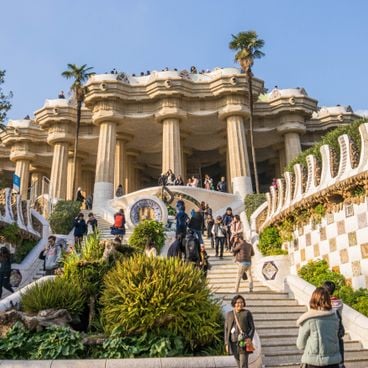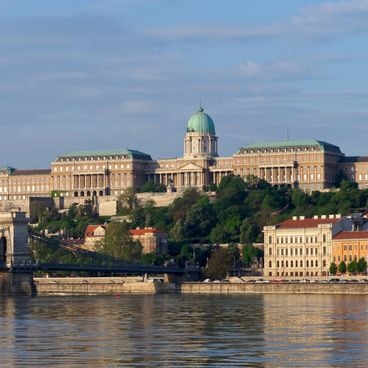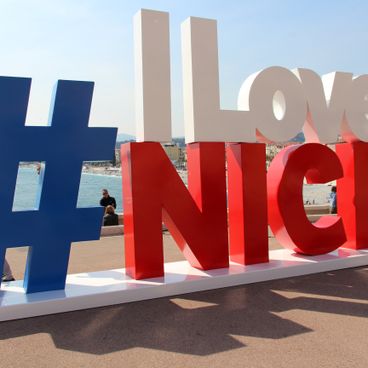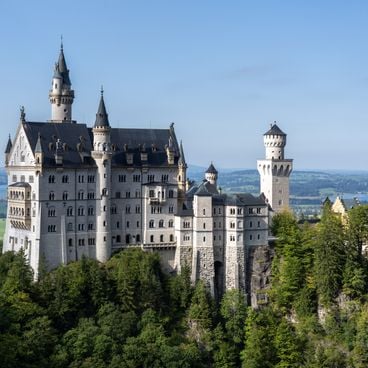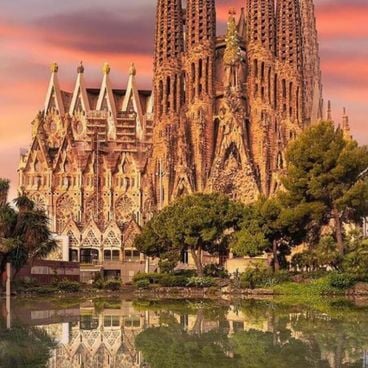The neo-Moorish architecture developed in the 19th and early 20th centuries, driven by European interest in oriental forms. This architectural movement combines Western building elements with Moorish decorative motifs: horseshoe arches, carved arabesques, geometric mosaics, and ornate stuccoes. This stylistic synthesis appears in a variety of structures, from places of worship to private residences, theaters, and city fortifications. The collection gathers representative examples from across Europe and beyond. In Marseille, the Alcazar Grand Theatre has displayed a façade decorated with oriental patterns since 1857. The Great Synagogue of Brussels, inaugurated in 1878, demonstrates the adoption of this style in Belgian religious architecture. In Germany, Drachenburg Castle near Bonn incorporates Moorish elements into a late 19th-century villa. The movement also reaches unexpected locations: Brighton’s Royal Pavilion blends Indian and Islamic influences for a British royal seaside residence, while rural farms in Hälsingland, Sweden, include ornaments inspired by this orientalist trend. From Pena Palace overlooking Sintra to the Justo Sierra Synagogue in Mexico city, these buildings exemplify the international spread of an architectural style that profoundly marked its period.
Built in 1857, this theater features a facade and interior spaces with oriental architectural elements and geometric motifs. The design combines Moorish decorative techniques with European theater construction traditions of the 19th century. The Grand Théâtre de l'Alcazar displays horseshoe arches, ornamental patterns, and stucco work characteristic of Neo-Moorish architecture in France.
The Grande Synagogue de Bruxelles was inaugurated in 1878 and combines Oriental and Romanesque architectural elements. This building displays tall arches and ornamental columns that are characteristic of the Moorish-European synthesis of the 19th century. As part of the neo Moorish architectural movement, this synagogue demonstrates the spread of Moorish design principles in Belgian religious buildings of the period.
This early 20th century synagogue features Arab ornamentation, horseshoe arches, and geometric mosaics. The building combines Moorish and Western architectural elements. The decorative details include Arab patterns and traditional mosaic work. This synagogue represents the spread of neo-Moorish style beyond Europe.
The Royal Pavilion was built between 1787 and 1823 as a seaside residence for King George IV. This building combines Indian and Islamic architectural elements with domes and minarets. Its facade displays Moorish influences through onion domes, horseshoe arches, and ornamental details characteristic of the neo-Moorish style. The Royal Pavilion exemplifies the fusion of Eastern and Western building traditions during the height of the neo-Moorish movement in the early 19th century.
Drachenburg Castle demonstrates a successful combination of Moorish and European architectural elements from the late 19th century. This private villa features characteristic horseshoe arches, geometric tile patterns, and decorative arabesques typical of the Neo-Moorish style. The facade combines Romanesque structural elements with Oriental ornamentation, while the interior spaces incorporate elaborate stucco work and mosaics. As an example of Neo-Moorish architecture's spread across Central Europe, this building shows how Moorish design principles were integrated into 19th-century German villa architecture.
The Leighton House was the residence of Victorian painter Frederic Leighton and displays Moorish-inspired elements in its interior design. Built in 1866, the building features an Arab Hall with horseshoe arches, Islamic tiles, and a central fountain. The architectural design combines Victorian domestic forms with orientalizing decorations from the 19th century. The house served as the artist's living and studio space until his death in 1896.
This former city gate in Cologne was redesigned in the 19th century in the Moorish Revival style. The Hahnentorburg combines medieval fortification architecture with Moorish design elements such as horseshoe arches and geometric patterns. Located at Rudolfplatz, the structure demonstrates the application of oriental architectural forms to an existing medieval structure. The redesign reflected the contemporary European enthusiasm for Moorish architecture.
These traditional Swedish farmhouses in Hälsingland demonstrate the influence of 19th century international architectural trends on rural residential buildings. The houses combine regional building traditions with decorative elements inspired by the orientalizing fashion of that period. The interiors feature painted wall surfaces and ornamental decorations that merge Moorish design principles with northern European folk art. This connection between local craft traditions and exotic influences documents the widespread adoption of neo Moorish stylistic elements even in remote rural regions of Scandinavia.
Built from 1910 to 1914, this mosque is among the largest in Europe and combines traditional Islamic architecture with modern construction methods. The facade displays elements of Moorish style with blue ceramic tiles and a 161-foot (49-meter) minaret inspired by Central Asian structures. The domed building references the Gur-Emir Mausoleum in Samarkand and demonstrates the adaptation of Eastern forms in a Northern European context.
The Pena Palace combines Romantic architecture with elements of various styles, including Moorish influences. The structure was built in the 19th century and displays decorative tiles, ornamented arches, and colorful facades rising on a hilltop above Sintra. This architecture unites Western and Moorish design elements in a Portuguese royal palace.
The Green Mosque is a significant religious structure in Istanbul that embodies the fusion of Moorish and Western architectural elements from the 19th and early 20th centuries. The building features colored mosaics, horseshoe arches, and ornate arabesques characteristic of the Neo-Moorish style. This mosque demonstrates the international spread of this architectural movement, which extends from Europe to Asia and encompasses various building types including synagogues, mosques, and public edifices.
The Parliament Palace in Bucharest is one of the largest administrative buildings in the world and combines neo-Mudejar design elements with monumental architecture. The structure displays Moorish influences in its decorative execution and merges them with Western European building traditions. The building was constructed in the late twentieth century and demonstrates the application of Moorish ornamentation and architectural motifs in a large scale public edifice.
This synagogue represents a combination of Eastern and Western architectural influences with Moorish elements from the 19th century. The building features typical characteristics of neo-Moorish architecture, including decorative arches and ornamental details. The Synagogue Israël stands as an example of the spread of this architectural style during the Ottoman period and documents the Jewish community of Edirne.
This central synagogue was completed in 1904 and combines Italian and Oriental architectural elements. The building features a square dome that rises to 115 feet (35 meters) and shapes the Roman skyline. The facade displays neo Moorish characteristics with horseshoe arches and geometric patterns. Inside, the synagogue encompasses three naves with marble columns and decorative mosaics. The structure serves as the main house of worship for Rome's Jewish community and houses a museum documenting the history of Roman Jews from ancient times.
This synagogue in Prague was completed in 1868 and combines Moorish design elements with Western construction techniques. The interior displays geometric patterns on walls and ceilings, gold ornamentation, and colored glass windows. The architectural execution reflects 19th-century interest in orientalizing forms. As a religious building of the Jewish community, the Spanish Synagogue documents the spread of the neo-Moorish style across houses of worship of different faiths in Europe during this period.
This residential building from 1885 features green and white ceramic tiles, wrought iron grilles, and oriental decorative elements. Maison Vicens combines Moorish stylistic features with Western building traditions of the late 19th century and represents the adaptation of Moorish architectural elements in Barcelona during this period.
This military building from 1874 combines Portuguese and Oriental architectural elements with Moorish influences. The structure displays horseshoe arches, columns, and a central courtyard characteristic of neo Moorish architecture. Built as part of the Portuguese military presence in Macao, the Casernement Mauresque illustrates the cultural blending between European colonial powers and Asian traditions during the late nineteenth century. The arcades and decorative details reflect the adaptation of Moorish styles originally developed in North Africa and the Iberian Peninsula.
The Dohány Street Synagogue was built between 1854 and 1859 following plans by Austrian architect Ludwig Förster. This building combines Moorish architectural elements with Romantic and Byzantine features. The facade displays horseshoe arches, geometric patterns, and two octagonal towers topped with onion domes. Inside, the space accommodates around 3,000 people spread across three aisles. The decoration includes arabesque ornamentation, polychrome mosaics, and an ornate coffered ceiling. A Jewish museum and memorial garden are located next to the main building.
The Rüstem Pasha Mosque was designed by Mimar Sinan in the 16th century and is noted for its extensive decoration with Iznik tiles. The interior walls display geometric patterns, floral arabesques and calligraphic inscriptions in rich blue tones that represent classic Ottoman ceramic art. The mosque is located in the historic commercial district of the city and was commissioned by Grand Vizier Rüstem Pasha. The tile work covers the entire prayer hall and forecourt.
This kiosk in Santa María la Ribera Park displays Moorish design elements within a public urban park. The 19th-century structure combines horseshoe arches, geometric ornaments, and decorative tiles with its function as a gathering place. The building was originally designed for an international exposition and later brought to Mexico, where it became the architectural centerpiece of the park. The iron construction features Moorish ornamentation that illustrates the connection between European engineering and Oriental design traditions.
The Jama Masjid Mosque in New Delhi combines Indo-Gothic and Moorish design elements and ranks among the largest mosques in India. This structure demonstrates the adaptation of traditional Moorish architectural features to the Indian context within the Neo-Moorish movement of the 19th and early 20th centuries.
This former town hall in Hämeenlinna combines Finnish building techniques with Moorish design elements. The structure displays characteristic features of neo-Moorish architecture, including decorative arches and ornamental details that were popular in the late 19th century. The facade shows a blend of northern European construction methods and oriental-inspired decoration. The town hall stands as an example of the spread of Moorish design elements in northern European public architecture during this period.
This Masonic temple combines Neo-Moorish elements with Beaux-Arts architecture. The building was erected in the early 20th century and features horseshoe arches, geometric mosaics, and decorative arabesques on its facade. The structure demonstrates the adaptation of Moorish architectural forms to American institutional buildings. The temple has served as a meeting place for the Masonic lodge since its completion and represents the period's enthusiasm for orientalizing architectural styles on the West Coast.
The Villa Kerylos is an early 20th-century Greek villa incorporating elements of Neo-Moorish architecture into its design. The property combines classical Greek forms with Moorish decorative motifs including arabesques and detailed mosaics. This fusion of Mediterranean and oriental styles reflects the period's fascination with historical architectural traditions and demonstrates how Neo-Moorish influences entered various European building projects.
This historic spa complex in Saratoga Springs demonstrates the connection between health architecture and 19th-century Moorish architectural elements. The buildings of the spa incorporate horseshoe arches, decorative mosaics, and geometric patterns. The Neo-Moorish design of the structures reflects the period's trend of combining Oriental aesthetics with therapeutic facilities. The baths and treatment rooms blend functional spa architecture with arabesque ornamentation, characteristic of the era of grand American health resorts.
This 15th-century synagogue in Tomar combines Jewish traditions with Moorish architectural elements. The building demonstrates the fusion of these two cultural influences in its design. The structure preserves features of medieval religious architecture and Moorish decorative arts. This synagogue stands as an example of cultural exchange between Jewish communities and Moorish building traditions on the Iberian Peninsula. The building documents the history of the Jewish community in Portugal during the Middle Ages and their architectural expressions.
This former synagogue from the 12th century combines Moorish and Jewish architectural elements, displaying Arabic ornamentation with geometric and floral patterns. Santa María la Blanca was constructed in the Mudéjar style and now serves as a museum documenting the cultural fusion of Moorish and Western traditions in Toledo. The interior spaces feature white columns with decorated capitals supporting horseshoe arches. The structure represents one of the important examples of Neo-Moorish architecture on the Iberian Peninsula and reflects the historical coexistence of different cultures in medieval Spain.
This cathedral in Saint Augustine displays Spanish Colonial architecture with Moorish elements from the 1887 renovation. The design combines traditional Spanish building forms with Neo-Moorish details such as horseshoe arches and decorative tilework. As a religious structure, the cathedral reflects the architectural fusion that became popular in the late 19th century when Western architects incorporated Moorish motifs into their designs. The renovation work resulted in a facade that unites both traditions and demonstrates the cultural heritage of the region.
This train station built in 1913 combines Moorish architecture with European Belle Époque elements. The facade displays horseshoe arches while geometric mosaics and ornamental tiles decorate the walls and ceilings. The structure emerged during the French colonial period and reflects the neo Moorish tradition that united oriental decorative motifs with Western construction techniques. The station served as an important transportation hub and remains a significant example of architectural development in North Africa during the early twentieth century.
